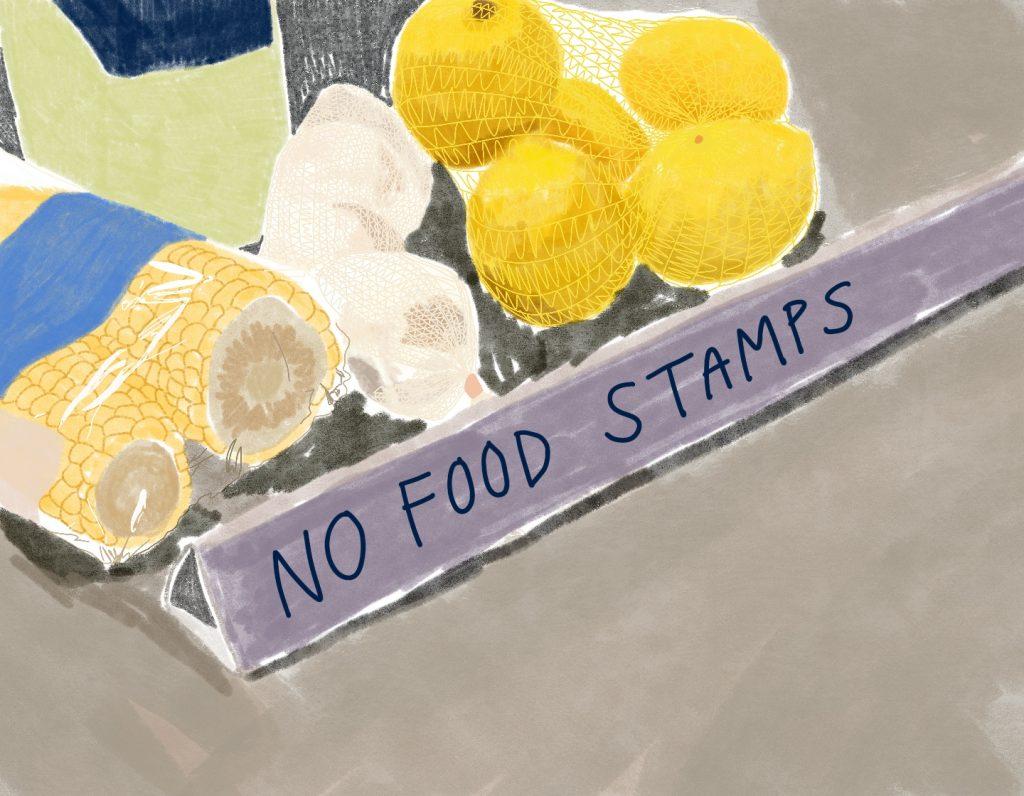Art by Autumn Hardwick
Transparency Item: The Perspectives section of the Graphic is comprised of articles based on opinion. This is the opinion and perspective of the writer.
Supplemental Nutrition Assistance Program (SNAP), more commonly known as food stamps, is a government-funded program. It is designed to make food more accessible for people who are low-income, according to their website.
Safety nets like SNAP aim to provide more flexibility for and alleviate the stress of people facing food insecurity and support those who live under the Federal Poverty Limit (FPL). For a single person in California, the FPL is anything below $2,148 a month.
Let’s face it — most students at Pepperdine do not match those descriptions. The median family income of a Pepperdine student was $128,700, with 56% of students coming from families in the top 20 percent of national incomes, according to a 2017 New York Times study. In the state of California, our median family income is among the highest in the country.
That same survey also said 1.5% of our students come from families belonging to the top .1% of the wealth in the United States, which is one of the highest-documented populations in the nation.
During COVID-19, the U.S. government relaxed the requirements for Electronic Benefit Transfer (EBT), making any person who has lived in the U.S. for 5+ years and an income below the FPL eligible regardless of dependent status.
Many TikToks about food stamps are advertising tips and tricks on getting free money for food. But food stamps are not a tip, trick or free money. They are a government resource designed to help those in tough financial situations facing food insecurity survive.
While researching SNAP and CalFresh after seeing a TikTok about it, I realized I am eligible because I am employed and make below the FPL. However, as a student from an upper-middle-class family, I am acutely aware I am not who these safety nets are for. I have never had to worry about where my next meal comes from or choosing between groceries or my electric bill.
Just because I or other students are working part-time minimum wage jobs does not mean we are starving, living in poverty or financially struggling. Simply, it just means college students are not completely well-off — it doesn’t mean we need government-funded money that could be allocated somewhere else.
I am aware that because Pepperdine is in Malibu and most of our student body comes from financially secure families does not mean members of our community are not struggling. I’m not against low-income students or students facing food insecurity using resources like EBT or the food cabinets on campus. In fact, I encourage you to make use of the relaxed eligibility.
However, with relaxed requirements and increased advertising of the programs, I am worried those who may need these resources to survive may not be able to get them because the system is becoming overwhelmed with middle- and upper-class students taking advantage of the system because TikTok told them to.
I caution my fellow middle-class peers to be aware of how signing up for these assistance programs may impact those who depend on them.
The stereotype of the starving college student exists even at high-income schools, and it’s not going away anytime soon. But, for the majority of students at Pepperdine, the problem has never been if they can or cannot afford groceries. The problem has been the accessibility to kitchens, inconsistent quality of food and cafeteria hours, dietary restrictions, and expensive local restaurants.
Just because you’re eligible and a college student doesn’t mean you’re a starving college student and that you deserve SNAP.
_________________
Follow the Graphic on Twitter: @PeppGraphic
Email Hope Lockwood: hope.lockwood@pepperdine.edu

